Before Elvis
The Prehistory of Rock n Roll
Larry Birnbaum

THE SCARECROW PRESS, INC.
Lanham Toronto Plymouth, UK
2013
Published by Scarecrow Press, Inc.
A wholly owned subsidiary of The Rowman & Littlefield Publishing Group, Inc.
4501 Forbes Boulevard, Suite 200, Lanham, Maryland 20706
www.rowman.com
10 Thornbury Road, Plymouth PL6 7PP, United Kingdom
Copyright 2013 by Larry Birnbaum
All rights reserved. No part of this book may be reproduced in any form or by any electronic or mechanical means, including information storage and retrieval systems, without written permission from the publisher, except by a reviewer who may quote passages in a review.
British Library Cataloguing in Publication Information Available
Library of Congress Cataloging-in-Publication Data
Birnbaum, Larry.
Before Elvis : the prehistory of rock 'n' roll / Larry Birnbaum.
p. cm.
Includes bibliographical references and index.
ISBN 978-0-8108-8638-4 (cloth : alk. paper) ISBN 978-0-8108-8628-5 (pbk. : alk. paper) ISBN 978-0-8108-8629-2 (ebook) 1. Popular musicUnited States1931-1940History and criticism. 2. Popular musicUnited States1941-1950History and criticism. 3. Popular musicUnited States1951-1960History and criticism. 4. Rhythm and blues musicHistory and criticism. 5. Rock musicUnited StatesTo 1961History and criticism. I. Title.
ML3477.B47 2013
781.640973'0904dc23
2012032269
 The paper used in this publication meets the minimum requirements of American National Standard for Information Sciences Permanence of Paper for Printed Library Materials, ANSI/NISO Z39.48-1992.
The paper used in this publication meets the minimum requirements of American National Standard for Information Sciences Permanence of Paper for Printed Library Materials, ANSI/NISO Z39.48-1992.
Printed in the United States of America
To my wife, Marianna, and my mother, Paula.
Introduction
Considering that rock n roll is little more than fifty years old, its origins are remarkably obscure. For all the books, magazines, newspaper articles, movies, radio and television programs, websites, college courses, and even museums devoted to rock n roll and its exponents, few attempts have been made to trace the roots of the music back much further than the end of World War II, less than ten years before the emergence of Elvis Presley.
Although there is no consensus as to what the first rock n roll record is, it is generally agreed that rock music grew out of postwar rhythm-and-blues. Thanks to the revival of swing dancing, theres been a growing awareness of the jump music that preceded R&B, but jazz historians still give short shrift to the bluesy side of the swing era. The boogie-woogie craze of the late 1930s and early 1940s has only been sketchily described, and the development of the boogie beat, the basis for early rock n roll (and for ska, the predecessor of reggae), remains little known.
The influence of country, pop, and Caribbean music on early rock n roll has likewise been acknowledged but not closely examined. The interaction of country music with jazz and R&B is especially important, but though western swingcountry musics string-powered response to big-band jazzhas been extensively researched, the hillbilly boogie, which bridged the gap between western swing and the rockabilly, has been virtually ignored.
Until now, rock n roll has largely been viewed as a bolt from the blue, an overnight revolution provoked by the bland pop that preceded it and created through the white appropriation of music that had previously been played only by and for blacks. But the roots of rock can be tracked all the way back to the minstrel and coon songs of the nineteenth and early twentieth centuries, which were written and performed by whites and blacks alike. The notion that Presley was the first white artist to perform African American music with a semblance of authenticity could hardly be further from the truth. Following a tradition dating back to colonial America, white musicians sang and played black music throughout the recorded era, some so convincingly that both white and black listeners misjudged their race. Much of modern rock and pop, from Elvis to Eminem, can be regarded as a latter-day extension of blackface minstrelsy, with a harder beat but without the burnt cork.
The prehistory of rock n roll was not just an underground phenomenon, confined to the back streets and byroads of blues and country music. Besides such unsung characters as Goree Carter, Hardrock Gunter, and the Harlem Hamfats, the list of rock forerunners includes such household names as Bing Crosby, Roy Rogers, and Ella Fitzgerald. Broadway reviews showcased ragtime and jazz, Hollywood musicals and animated cartoons helped popularize swing, and singing cowboy movies created a national audience for country music. Blueberry Hill became a rock classic at the hands of Fats Domino in 1956, but the song, a No. 1 pop hit for Glenn Miller in 1940, was sung by Gene Autry in the 1941 western The Singing Hill and recorded in 1949 by Louis Armstrong.
It is widely believed that rock music is derived from the blues and that the blues, based on dimly remembered African models, began in the Mississippi Delta. In fact, the evidence for the Delta origin of the blues is tenuous, and the connection between rural blues and early rock n roll is oblique, mediated by jazz and country music. For the most part, the blues found its way into rock music through jazz, which has incorporated blues since jazz began. With rare exceptions, country blues had little impact on rock n roll before the British Invasion of the mid-1960s. In any case, the form followed by such rock classics as Bill Haleys Rock Around the Clock and Carl Perkinss Blue Suede Shoes is not the blues but the verse-and-refrain hokum song.
The evolutionary paths of jazz, blues, country, pop, and gospel music were closely intertwined. The New Orleansborn singer and banjo player Papa Charlie Jackson helped spark a trend for bawdy hokum songs with his 1925 hit Shake That Thing. Jacksons Salty Dog Blues, recorded the previous year, became a standard of both Dixieland jazz and bluegrass. Thomas A. Dorsey, who helped lead the hokum movement under the name Georgia Tom, went on to found modern gospel music. Jimmie Davis, a white country singer who recorded such risqu hokum songs as Tom Cat and Pussy Blues, also cut a version of Salty Dog with the black guitarists Oscar Buddy Woods and Ed Dizzy Head Schaffer, a rare example of a racially integrated southern session. After popularizing You Are My Sunshine, which became a hit for Gene Autry and for Bing Crosby in 1941, Davis appeared in singing cowboy movies and, after serving two terms as governor of Louisiana, spent the final years of his career performing mostly gospel songs.
During the swing era, big bands such as Count Basies, Benny Goodmans, and Tommy Dorseys picked up the boogie-woogie, while blues and country music took on a jazzy feel. Artists such as the Kansas City blues shouter Big Joe Turner brought the earthy sounds of the Southwest to nationwide attention; Turners first record, Roll Em Pete, made in 1938 with the boogie-piano master Pete Johnson, embodies the spirit of what was to become rock n roll. Early 1940s jump bands such as Lucky Millinders and Louis Jordanswith their shouted vocals, shuffle rhythms, boogie bass lines, and honking saxophoneslaid the foundation for rhythm-and-blues.
With the postwar decline of the big bands, singers and small combos came to the forefront. Among the leaders of the burgeoning R&B movement were Roy Milton, Roy Brown, Joe and Jimmy Liggins, and Amos Milburnall nearly forgotten today. Wynonie Harris, who made his first record in 1945 as the vocalist with Lucky Millinders band, cut the smash hit Good Rockin Tonight in late 1947, launching a cascade of similar rock songs with lyrics about whiskey, women, and automobiles. This first wave of rock n roll had all but ended by the time young whites discovered the music and claimed it as their own.

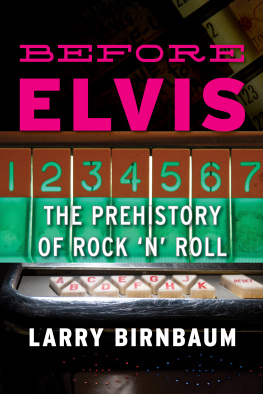
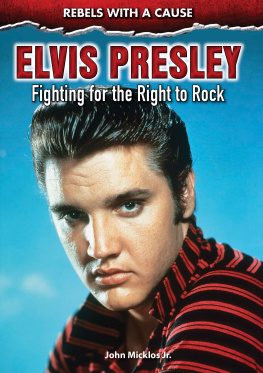

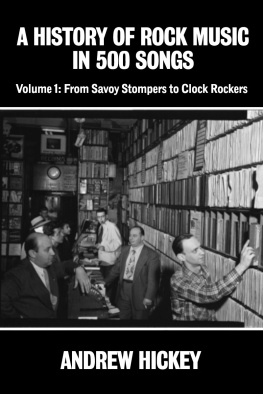
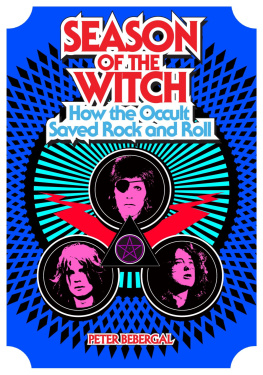
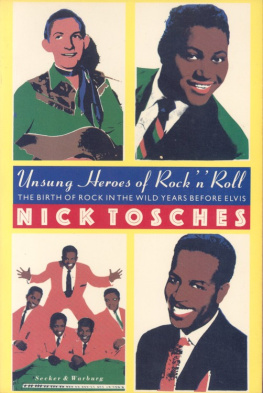
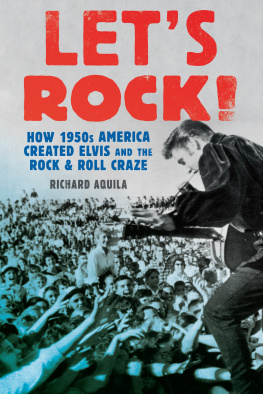
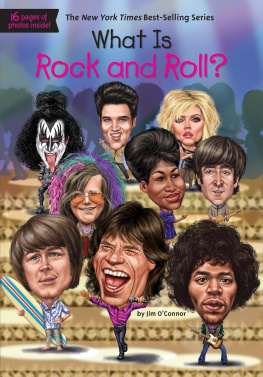
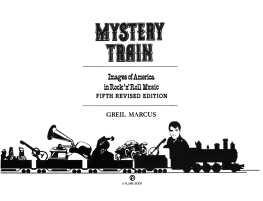

 The paper used in this publication meets the minimum requirements of American National Standard for Information Sciences Permanence of Paper for Printed Library Materials, ANSI/NISO Z39.48-1992.
The paper used in this publication meets the minimum requirements of American National Standard for Information Sciences Permanence of Paper for Printed Library Materials, ANSI/NISO Z39.48-1992.